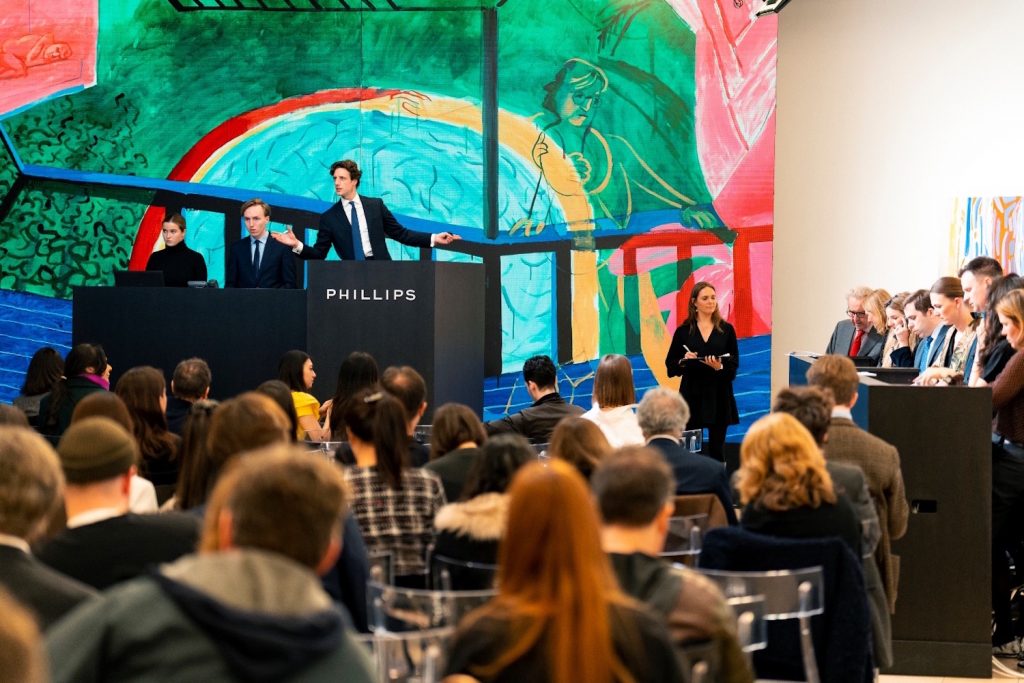During the pandemic, we all watched with fascination as the Reddit chat room WallStreetBets wreaked havoc on the stock market. While these day-traders earned great profits, philosophically they were also giving the middle finger to the financial establishment in an effort to prove that the stock market often has no basis in reality.
A similar dynamic is playing out right now in the art market as seeming coalitions of trend colluders rally behind “meme art”: often figurative painting by young artists without much grounding in history. And this has the potential to cause a massive crisis in value-making around art.
Let’s describe the 20th century as having, for lack of a better term, a “traditional mode of value-making”—one in which critical and aesthetic value is inextricable from financial and investment value.
Understanding how value is generated in the art world is complicated, abstract, and can lead to suspicion. With aesthetics, sometimes there is confusion over the merits of a formal innovation that appears to be “something a child could make.” Aesthetic value, meanwhile, operates differently than use value, making art an unusual kind of commodity—one that does not lend itself to clarifying statistical analyses.
Nevertheless, in the traditional mode, the monetary value assigned to an artwork stems from a lengthy qualification process—a journey of consensus-making by curators, artists, collectors, critics, art historians, museum directors, non-profits, etc. One can agree to disagree with the consensus, but no matter what, there are critical benchmarks to organize value around.
Sure, this system has its flaws: namely, that the trained individuals who occupy this space were almost entirely, until very recently, white men. There are also entities who monopolize certain artists’ works, exerting control over their markets. And there are valid corrections to be made. But despite these flaws, there has always been an important understanding that you cannot separate aesthetic value from financial value.
Enter the 21st century and the post-pandemic acceleration of information flow, and we see a dangerous erosion of this symbiotic relationship. This breakdown stems from an emergent, insidious kind of pricing dynamic: the “new mode of value-making.”

Auctioneer Henry Highly at Phillips’s 20th century and contemporary art sale in London on March 3. Image courtesy Phillips.
In this new paradigm, aesthetics and criticality are supplanted by the aggregation of information used to identify trends in the market ahead of others for the sole purpose of financial gain. Once value-making in art comes solely from a place of profit, we are heading into sketchy territory. Judgment is no longer in the hands of history or experts but rendered immediately by so-called art-world influencers whose power of persuasion is not rooted in training or decades of experience, but rather in the number of their followers.
In this fan-based economy, art no longer has to be experienced physically or be historically contextualized. In fact, the object itself no longer matters, leaving only an image that signifies potential profit, nothing more. This should be an urgent call for debate. The potential death blow to a traditional mode of value-making should be of serious concern to anyone who wants to defend the true essence, power, and ability of art to inspire, educate, incite agency, and remind us we are human.
There are four factors that embolden this crisis: the primacy of auctions, the breakdown of the evening sale, the expansion of art lending, and the emergence of a new form of appraisal.
Regarding auctions, the art market suddenly only refers to this week’s auction results, ignoring primary and secondary sales, not to mention any scrutiny of what tangential factors led to the reported auction numbers.
Then there is the breakdown of the evening sale. What was once a curated selection of art-historically significant works has disintegrated into an Evening-Sale-For-the-Shit-We-Know-We-Can-Profit-On-This-Week—a hodgepodge of collectibles, NFTs, a T-Rex, and some sneakers mixed with a great amount of recently made, non-qualified art and perhaps a smattering of masterworks that merit evening sale status.
Meanwhile, art lending has exploded with the growth of art banking, which claims to make the art market transparent for the bank’s high net-worth clients. Of course, transparency here does not mean revealing the actual machinations behind an art sale or justifying the qualitative appraisal of a particular work—rather it is banker-code for calculable value based on market (i.e., auction) history as shoved into and spewed out of grids, graphs, and forecasts. (The idea of a market forecast for an artist is hilarious if you really understand the incredible nuances not just within their oeuvre but in the lifetimes of specific works.)

A member of the vetting committee at work at TEFAF Maastricht 2019. Photo by Loraine Bodewes courtesy of TEFAF Maastricht.
Finally, this brings us to my favorite topic: the appraisals needed for loans. No longer is a work’s fair market value (FMV) occasionally assessed in order to properly insure one’s collection. Instead, there is a new, “real time” assessment happening that only factors in recent auction history.
This, unbeknownst to most collectors, leaves most of what they own considerably less valuable than what a typical FMV appraisal would list. I have seen appraisals done for a bank that would take a new primary market work by a blue-chip artist with more critical cataloging than most and cut the purchase price in half simply because their work is not currently trading at auction (even though it sells out to great non-speculating collectors on the primary market).
The idea of real-time appraisals is amber-alert-worthy. It suggests that after every auction, your artwork needs to be re-quantified, leaving a lot of real art incapable of generating a loan. And while real collectors usually buy for love, they certainly care if their $1 million artwork is suddenly worth $500,000. All of this is reinforced by the many tech start-ups developing apps that encourage you to constantly check the investment value of your collection. I sat on the advisory committee for a fin-tech startup that insisted on being able to algorithmically deduce this in real time—that is when I promptly removed myself from the conversation.
If this erosion of traditional value-making persists, we’ve got big problems heading our way. Collectors will no longer feel safe buying real art. Speculation will prevail. Art collecting will devolve into day trading and gambling. Emerging artists with few critical qualifications, or artists who have potential but are simply too emerging for the glare of auctions, will suffer price hikes that will prompt sell-offs as well as hyper-exaggerated demand on the primary market. And price crashes, not adjustments, will follow.
Social-information-based value does not give a shit about longevity—it cares only about right now. And what happens to those speculating on such artworks? Is there resale potential for the early work of an artist-in-training whose painting costs $25,000 on the primary market and has just traded at auction for $3 million? Highly unlikely. It is reminiscent of the recent debacle in which Jack Dorsey’s first tweet sold for $2.9 million as an NFT in March 2021, then failed to resell for even $1,000 the following year. The only thing propping up the original sale was noise, and noise doesn’t last.

People walk by a Bored Ape Yacht Club NFT billboard in Times Square on January 25, 2022 in New York City. (Photo by Noam Galai/Getty Images)
So what now? Are there any solutions? Most urgently, we need to understand the difference between the traditional and new modes of value-making and educate people about them. We might publish primary sales, private deals, and exhibition histories in the same place that auction prices appear so that a search mechanism considers all of the information. A Wiki-site could exist where vetted individuals publish sale prices, or perhaps artists would upload price information on the blockchain. Auction houses should refuse to accept works by artists who have not reached certain critical benchmarks, nor should they mix collectibles with fine art. Newspapers and magazines should commission journalists to cover art itself and not just the auction market. Finally, bank appraisals should follow FMV rather than recalibrating after every auction.
Maybe none of these ideas are valid, but something’s got to give. Art is so much more than the market. We are lucky to be working around it, but we had better fight for its survival. Otherwise our reality will start to look a lot more like the Wolf of Wall Street.
Lisa Schiff is a New York-based art advisor and specialist in contemporary and modern art. She is the founder and president of SFA Advisory, her permanent outpost in Tribeca that now presents a rolling series of exhibitions. For more information, please visit: www.sfa-advisory.com.









